Tuesday, March 5, 2024 – The East RIver Drive Promenade Sketches and Reality

WEDNESDAY, MAY 27, 2020
The 63rd Edition of From Our Archives
REVISITING THIS EDITION
TUESDAY, MARCH 5, 2024
#1196

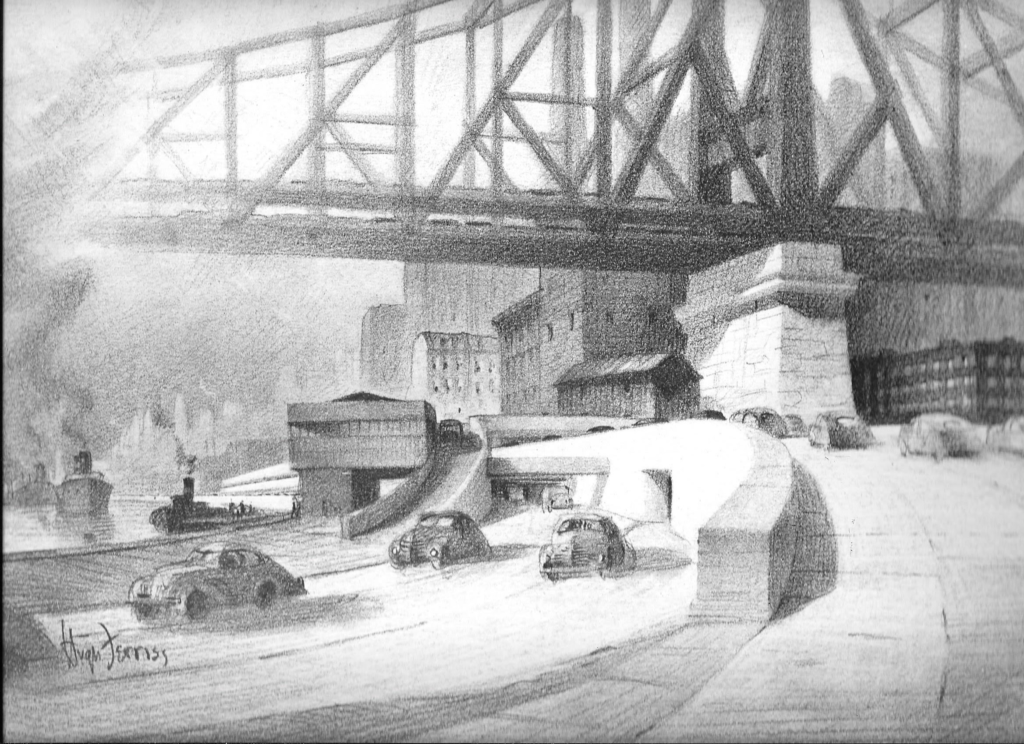
THE EAST RIVER DRIVE
ILLUSTRATIONS BY HUGH FERRIS
DEDICATION: JUNE 18, 1940
80 YEARS ON THE F.D.R.
Hugh Macomber Ferriss (July 12, 1889 – January 28, 1962) was an American architect, illustrator, and poet.[1][2] He was associated with exploring the psychological condition of modern urban life, a common cultural enquiry of the first decades of the twentieth century. After his death a colleague said he ‘influenced my generation of architects’ more than any other man.” Ferriss also influenced popular culture, for example Gotham City (the setting for Batman) and Kerry Conran’s Sky Captain and the World of Tomorrow.[


Early in his career, Ferriss began to specialize in creating architectural renderings for other architects’ work rather than designing buildings himself. As a delineator, his task was to create a perspective drawing of a building or project. This was done either as part of the sales process for a project, or, more commonly, to advertise or promote the project to a wider audience. Thus, his drawings were frequently destined for annual shows or advertisements. As a result of this, his works were often published (rather than just given to the architect’s client), and Ferriss acquired a reputation.
After he had set up as a free-lance artist, he found himself much sought after. In 1912, Ferriss arrived in New York City and was soon employed as a delineator for Cass Gilbert. Some of his earliest drawings are of Gilbert’s Woolworth Building; they reveal that Ferriss’s illustrations had not yet developed his signature dark, moody appearance. In 1915, with Gilbert’s blessing, he left the firm and set up shop as an independent architectural delineator.
In 1914, Ferriss married Dorothy Lapham, an editor and artist for Vanity Fair. Daily News Building, NYC By 1920, Ferriss had begun to develop his own style, frequently presenting the building at night, lit up by spotlights, or in a fog, as if photographed with a soft focus. The shadows cast by and on the building became almost as important as the revealed surfaces. His style elicited emotional responses from the viewer. His drawings were being regularly featured by such diverse publications as the Century Magazine, the Christian Science Monitor, Harper’s Magazine, and Vanity Fair. His writings also began to appear in various publications.
In 1916, New York City had passed landmark zoning laws that regulated and limited the massing of buildings according to a formula. The reason was to counteract the tendency for buildings to occupy the whole of their lot and go straight up as far as was possible. Since many architects were not sure exactly what these laws meant for their designs, in 1922 the skyscraper architect Harvey Wiley Corbett commissioned Ferriss to draw a series of four step-by-step perspectives demonstrating the architectural consequences of the zoning law. These four drawings would later be used in his 1929 book The Metropolis of Tomorrow.
This book illustrated many conte crayon sketches of tall buildings. Some of the sketches were theoretical studies of possible setback variations within the 1916 zoning laws. Some were renderings for other architect’s skyscrapers. And at the end of the book was a sequence of views in Manhattan emerged in an almost Babylonian guise. His writing in the book betrayed an ambivalence to the rapid urbanization of America: There are occasional mornings when, with an early fog not yet dispersed, one finds oneself, on stepping onto the parapet, the spectator of an even more nebulous panorama. Literally, there is nothing to be seen but mist; not a tower has yet been revealed below, and except for the immediate parapet rail . . . there is no suggestion of either locality or solidity for the coming scene.
To an imaginative spectator, it might seem that he is perched in some elevated stage box to witness some gigantic spectacle, some cyclopean drama of forms; and that the curtain has not yet risen . . . there could not fail to be at least a moment of wonder. What apocalypse is about to be revealed? What is its setting? And what will be the purport of this modern metropolitan drama? In 1955, he was elected into the National Academy of Design as an Associate member, and became a full Academician in 1960.
THIS IS A SMALL SELECTION OF THE IMAGES IN THE COMMEMORATIVE BOOK. THERE ARE MULTIPLE PHOTOS AND COMMENTARY. YOU CAN REQUEST TO SEE IT FROM THE RI.I.H.S.
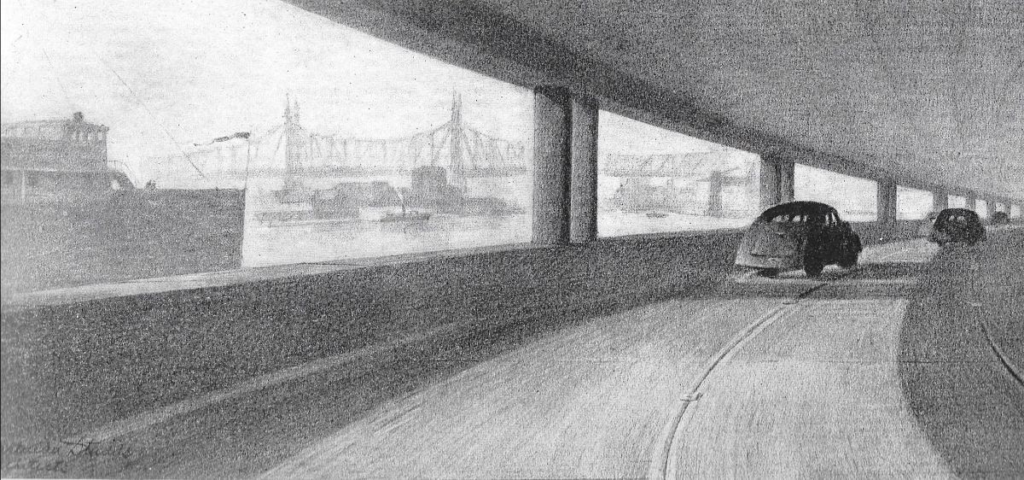
Drawing of Southbound Roadway in the Triple-Dec Section in the 80’s
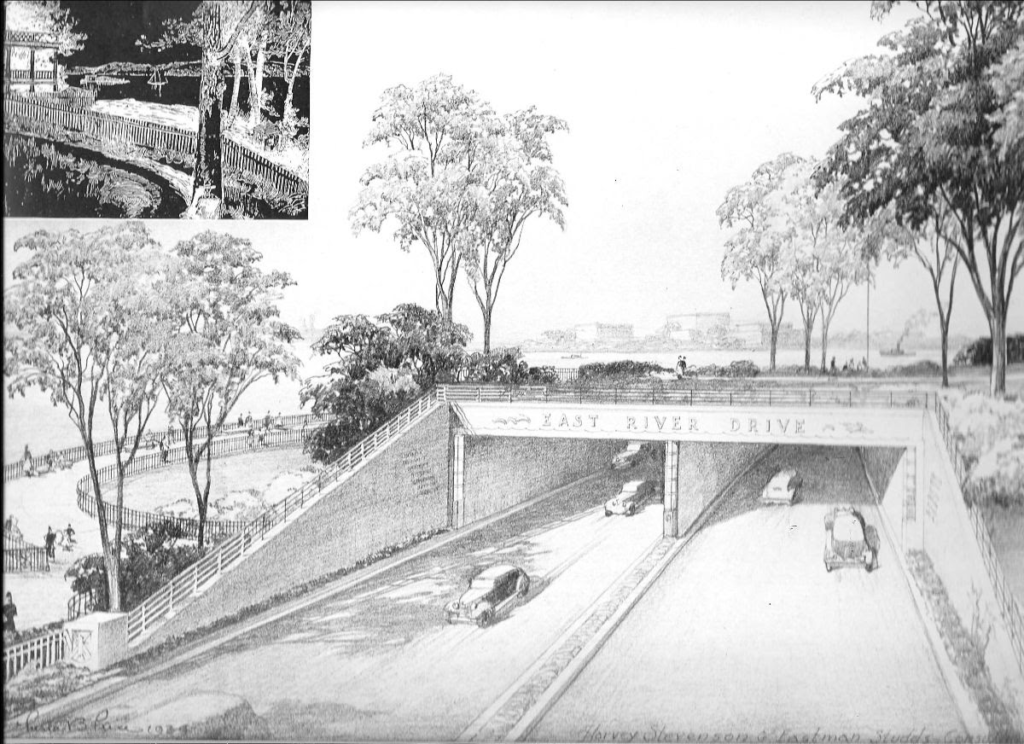
North portal of only true tunnel in East River Drive. It fronts Gracie Mansion, preserving it ancient view of the river.
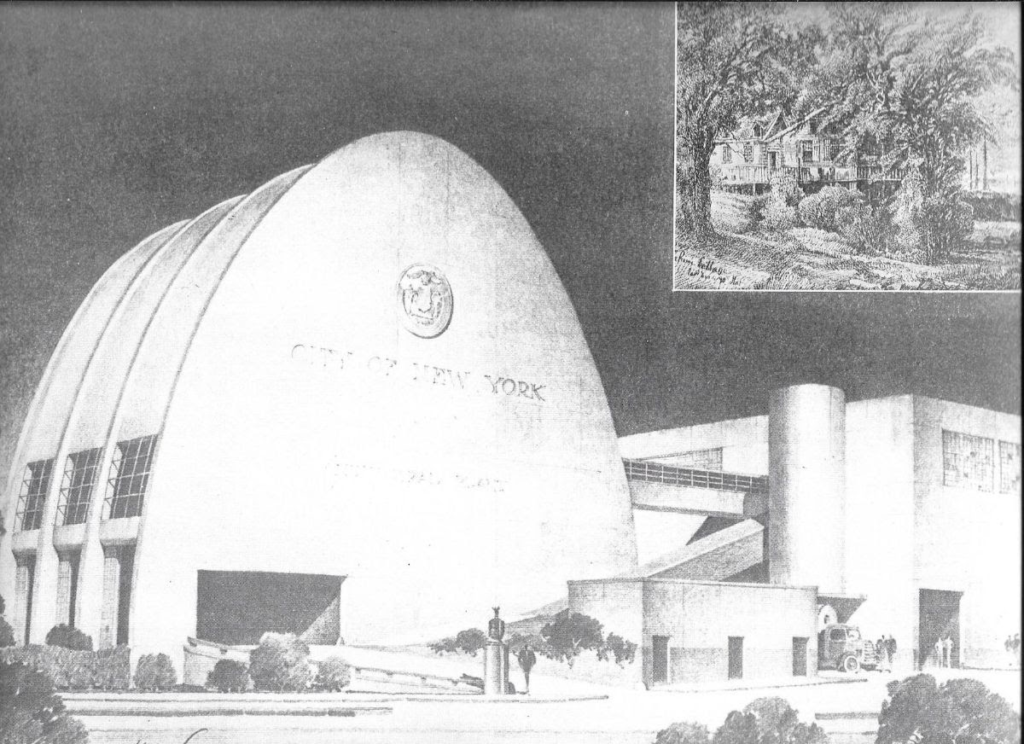
Architects’ rendering of new municipal asphalt plant to replace existing structure on 91st Street.

The successful Asphalt Green today
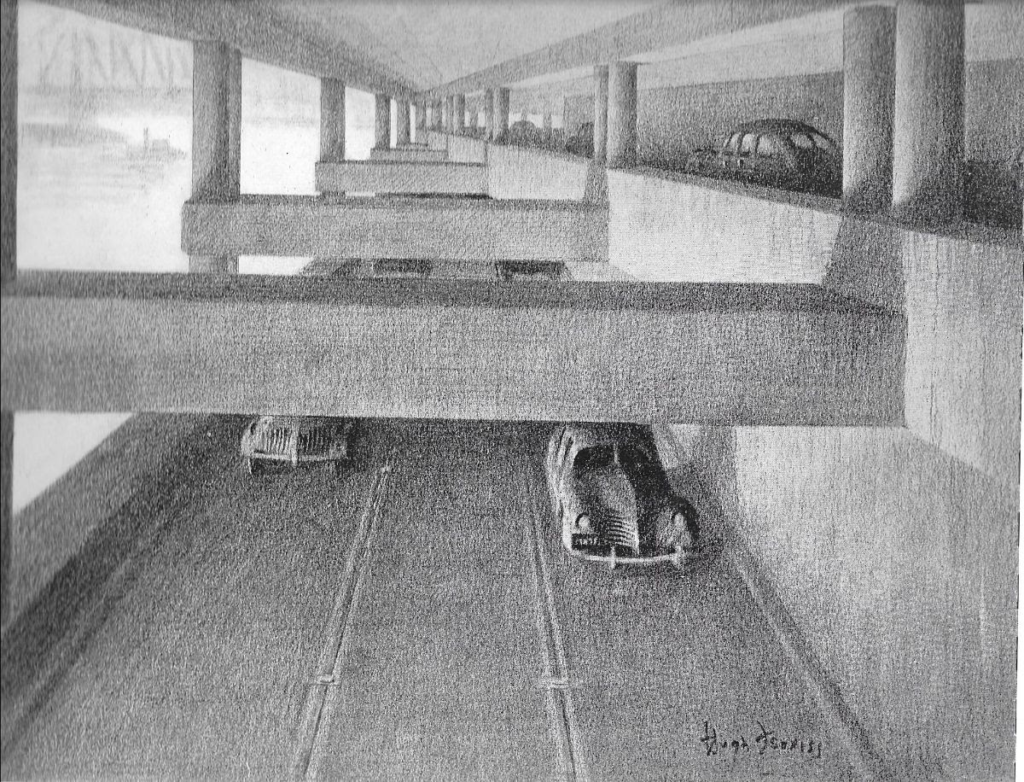

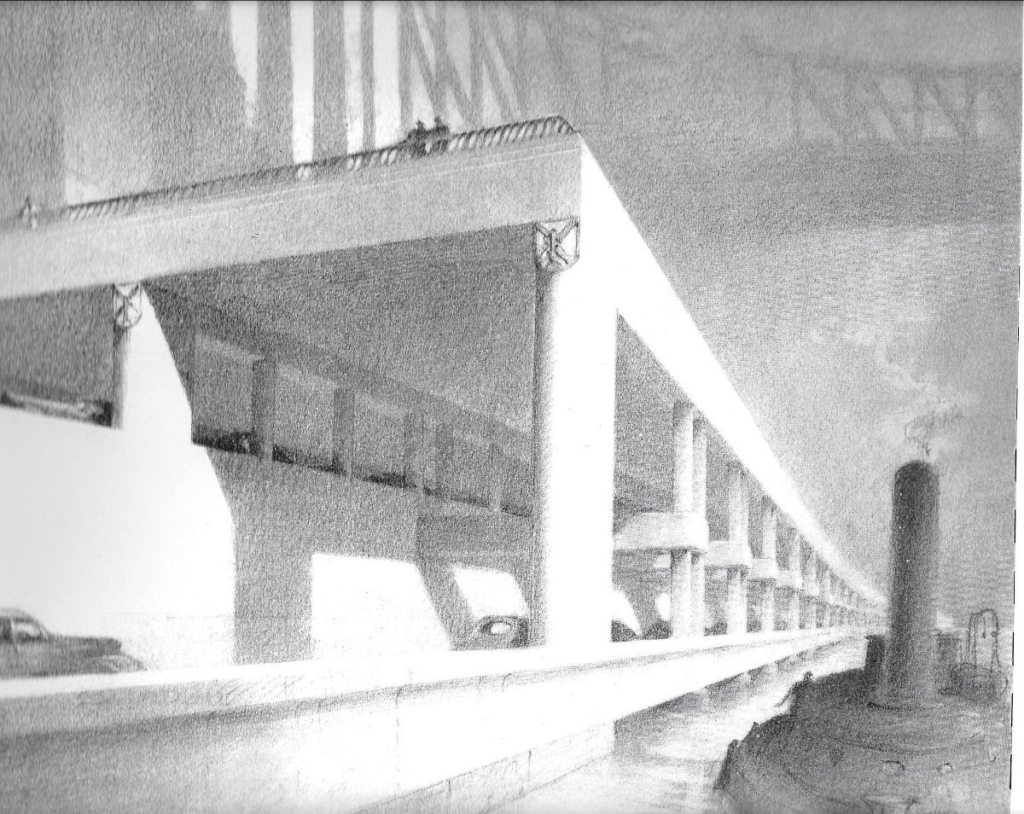

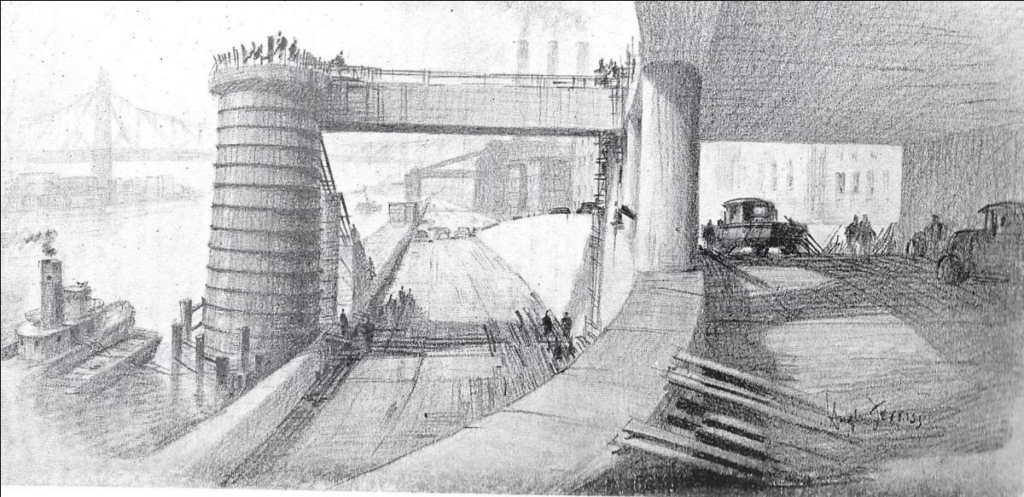
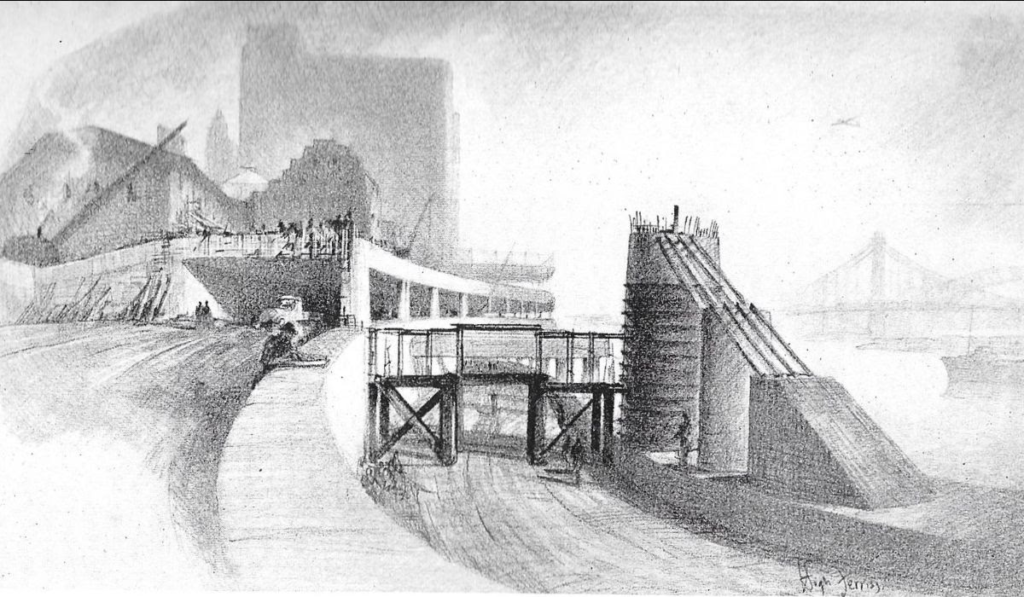
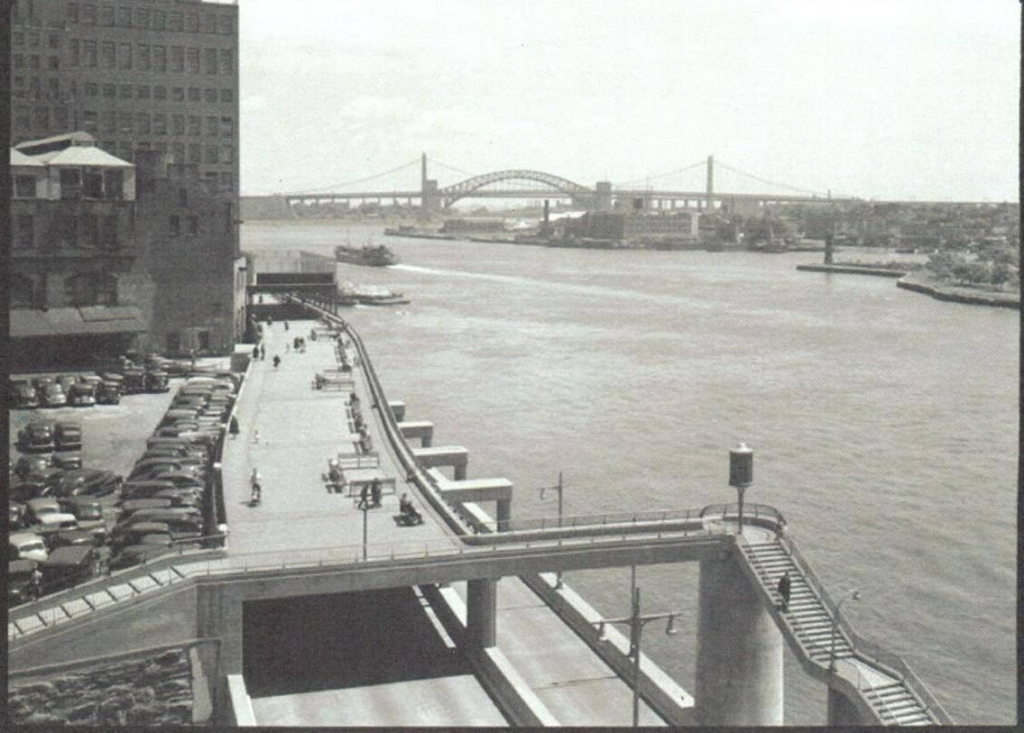




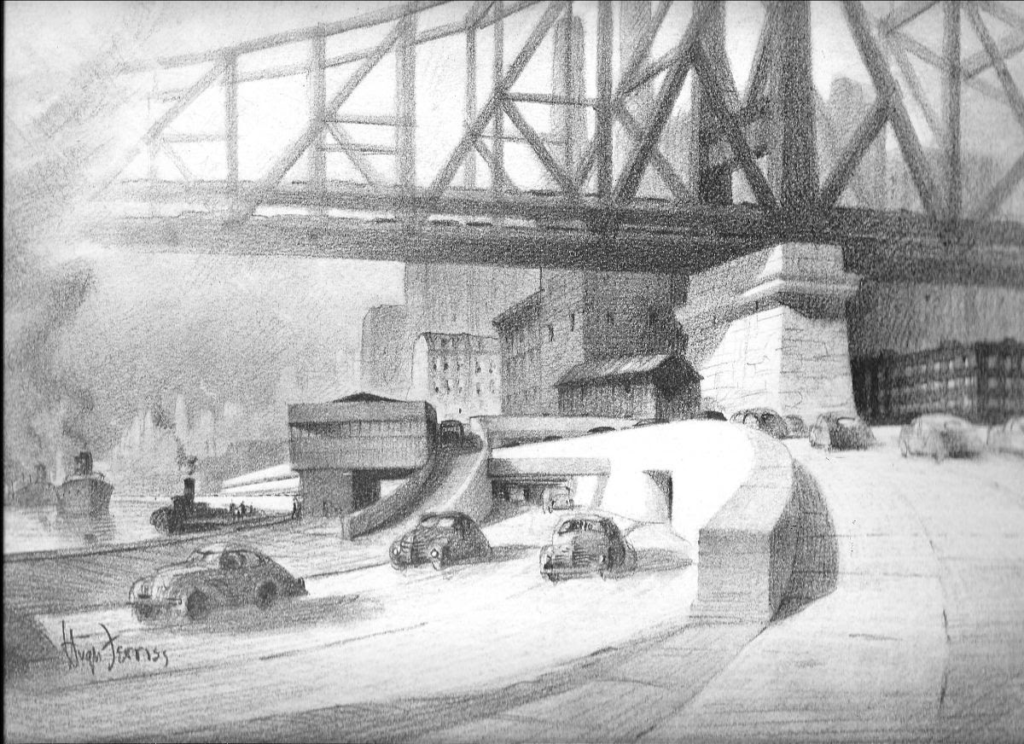
Drawing looking south from 60th Street showing north and southbound roadways as they pass under Queensboro Bridge. Structure at left is new Department of Sanitation dump. The ramp to the dump is for Sanitation trucks.
Now, just north of the dump is the East River Roundabout artpiece by Alyce Aycock

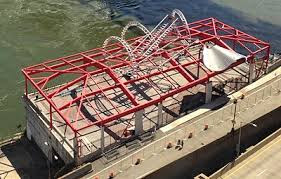
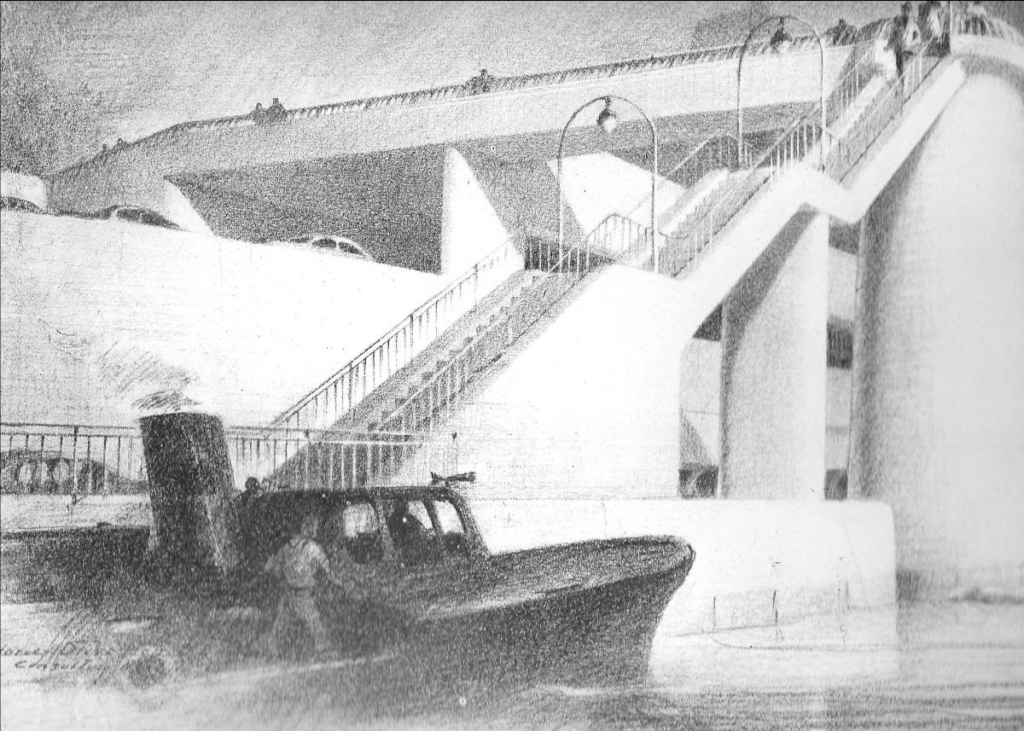
A drawing of the completed portal of the triple deck structure at 81st Street. The tower marks the juncture of the portion of the drive built on land with that built over water. The stairway joins the shore front drive at water level with the esplanade that is the third deck of the drive. Overpass leads to 81st Street.
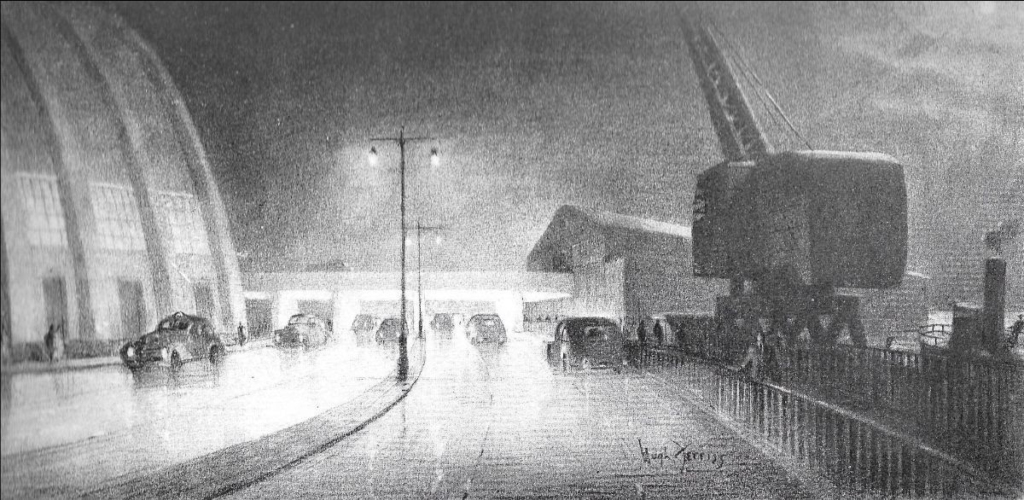
Future concept of 91st Street redesign with Sanitation dump.
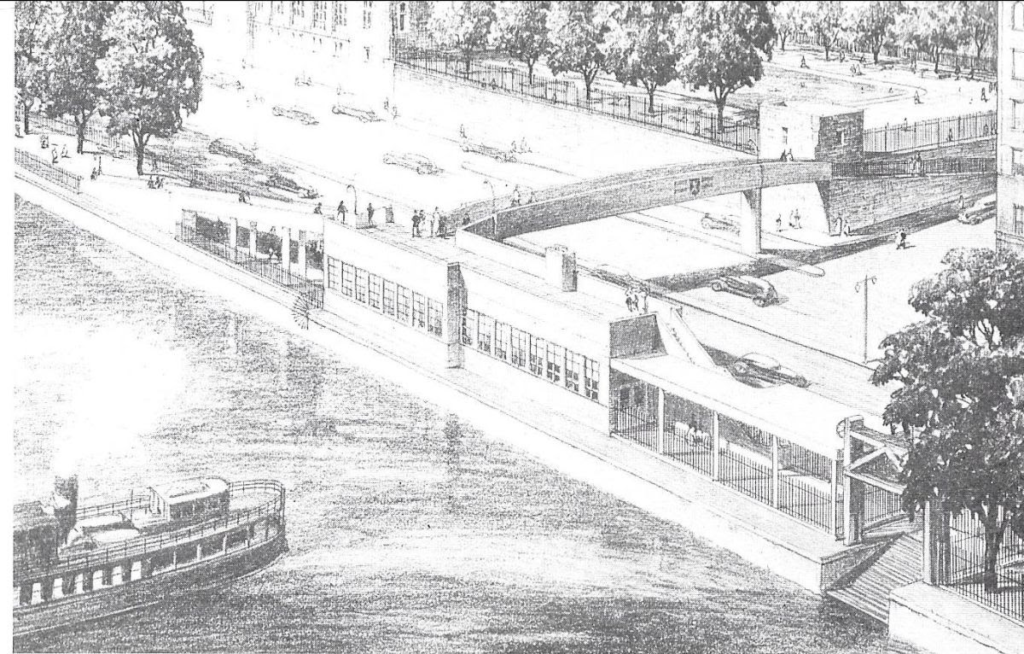
Chester Price drawing of new municipal ferry house at 78th Street. The roof of the ferryhouse will serve as a section tho the Drive’s pedestrian esplanade. Access to the ferryhouse from the west side of the Drive is by an overpass.
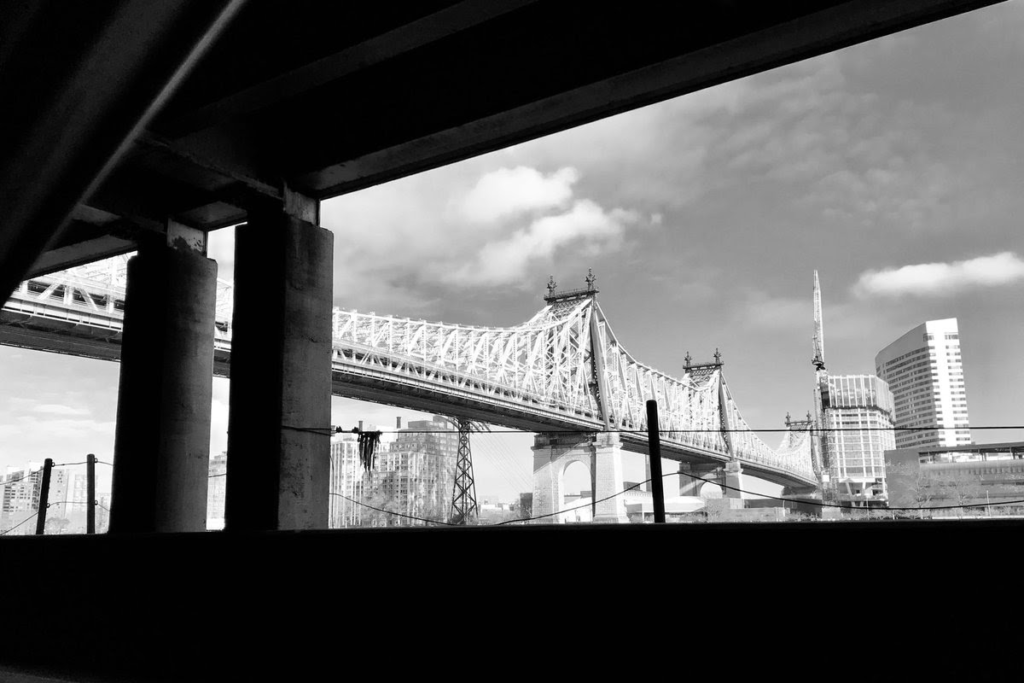

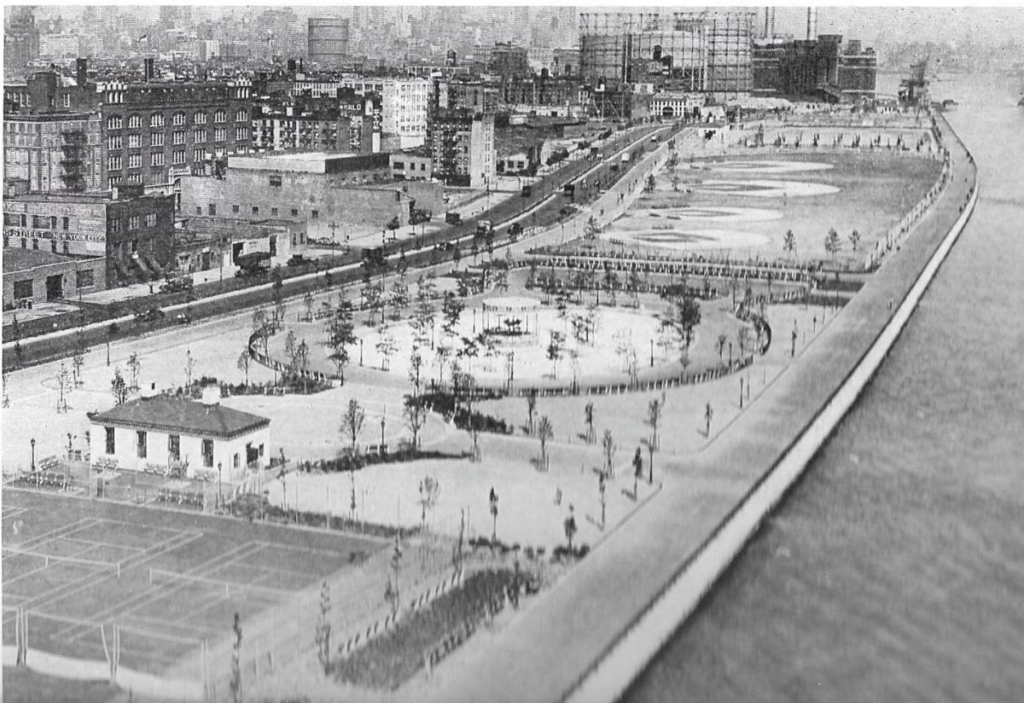



TUESDAY PHOTO OF THE DAY
COURTESY OF JUDITH LIEBERMAN
SEND US YOUR TITLE FOR THIS PHOTO

Text by Judith Berdy
Thanks to Bobbie Slonevsky for her dedication to Blackwell’s Almanac and the RIHS
Thanks to Deborah Dorff for maintaining our website
Edited by Melanie Colter and Deborah Dorff
All image are copyrighted (c)
Roosevelt Island Historical Society
unless otherwise indicated
FUNDING PROVIDED BY ROOSEVELT ISLAND OPERATING CORPORATION PUBLIC PURPORE GRANTS
CITY COUNCIL REPRESENTATIVE BEN KALLOS DISCRETIONARY FUNDING THRU DYCD
All image are copyrighted (c) Roosevelt Island Historical Society unless otherwise indicated
www.tiktok.com/@rooseveltislandhsociety
Instagram roosevelt_island_history
THIS PUBLICATION FUNDED BY DISCRETIONARY FUNDS FROM CITY COUNCIL MEMBER JULIE MENIN & ROOSEVELT ISLAND OPERATING CORPORATION PUBLIC PURPOSE FUNDS.


Copyright © 2024 Roosevelt Island Historical Society, All rights reserved.Our mailing address is:
rooseveltislandhistory@gmail.com

Leave a comment